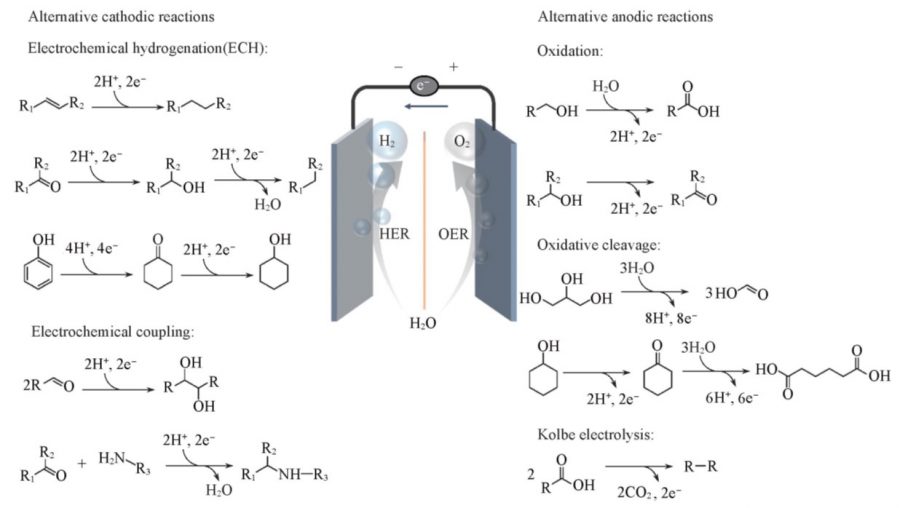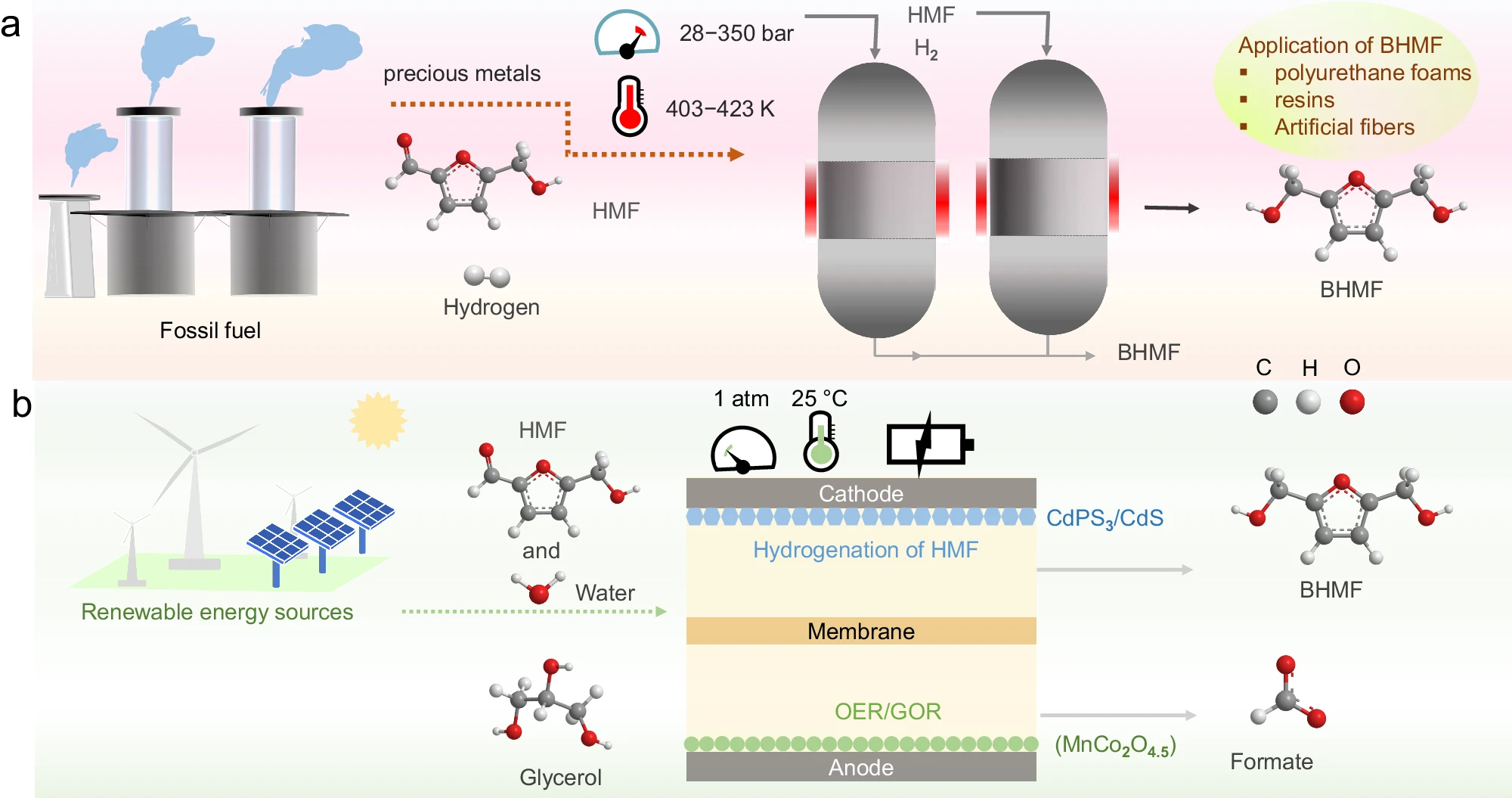82. Efficient Electrooxidation of 5-Hydroxymethylfurfural to 2,5-Furandicarboxylic Acid in a Weak Alkaline Medium Enabled by Interfacial OH− Enrichment
Peiyun Zhou, Xiang Liu, Zhuo Chen, Cheng Tang, Xikang Zhao, Jinyu Zheng, Ruixiang Ge, Haohong Duan*
Adv. Funct. Mater. 2025, 2502081
DOI: 10.1002/adfm.202502081
Abstract
Developing electrooxidation of 5-hydroxymethylfurfural (HMF) to 2,5-furandicarboxylic acid (FDCA) in a weak alkaline medium can potentially inhibit HMF degradation to humins and thus mitigate carbon loss that is encountered in strong alkaline media; however, the activity is often compromised under low OH− concentration. Herein, by incorporating chromium oxide (CrOx) as a hard Lewis acid onto CoOx surface (CoOx–CrOx), HMF electrooxidation activity is largely boosted in a 1 m carbonate buffer (pH 11), including higher FDCA Faradaic efficiency (from 41% to 90%), selectivity (from 33% to 92%), and yield (from 28% to 89%). The electrolysis under the weak alkaline medium can tolerate high HMF initial concentration (100 mm), showing higher carbon balance (97%) compared with that in strong alkali (≈70%). Experimental data reveal that CrOx accelerates OH− migration from bulk to the electrode surface and enriches OH− at the electrode–electrolyte interface, enhancing catalyst reconstruction and reaction intermediate conversion, thus promoting the activity. Furthermore, the interfacial OH− enrichment strategy is demonstrated effective for other weak alkaline medium and for other biomass-derived molecule (ethylene glycol and glycerol) electrooxidations. This work demonstrates that hard-Lewis-acid-induced OH− enrichment dynamically optimizes interfacial microenvironment, establishing a new design principle for efficient electrocatalytic systems under weak alkaline conditions.




